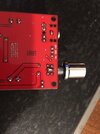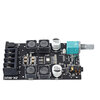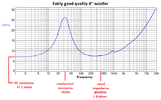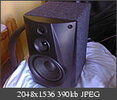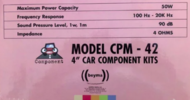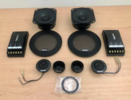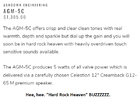SentinelAeon
Member
Hello, i am trying to convert stereo into mono on my bluetooth amplifier/receiver, since i am using a woofer + tweeter setup. I included a picture of how i solder the pins together. Right now the pot is up to a maximum, which means the pins are effectively shorted together. I know ur supposed to use a resistor but i am looking for a max SPL, even if the amplifier dies after a few months. The amplifier chip itself is TPA3116D2. The amplifier board is ZK-502C hifi.
Problem 1: Even when the pins are shorted together, i get on average about 4-5dB less SPL than i would otherwise and i dont understand why since i am not using any resistors and pot doesnt offer any resistance.
Problem 2: When pins are shorted together, the speaker amplifier will shut down and restart if the pot is over 80% volume. This happens even if the speakers are not connected ! I am really wondering why.
Question: Is there any way to get around this since i need every single last dB i can get, so i cant lose even 1dB, let alone 3dB.
Problem 1: Even when the pins are shorted together, i get on average about 4-5dB less SPL than i would otherwise and i dont understand why since i am not using any resistors and pot doesnt offer any resistance.
Problem 2: When pins are shorted together, the speaker amplifier will shut down and restart if the pot is over 80% volume. This happens even if the speakers are not connected ! I am really wondering why.
Question: Is there any way to get around this since i need every single last dB i can get, so i cant lose even 1dB, let alone 3dB.

